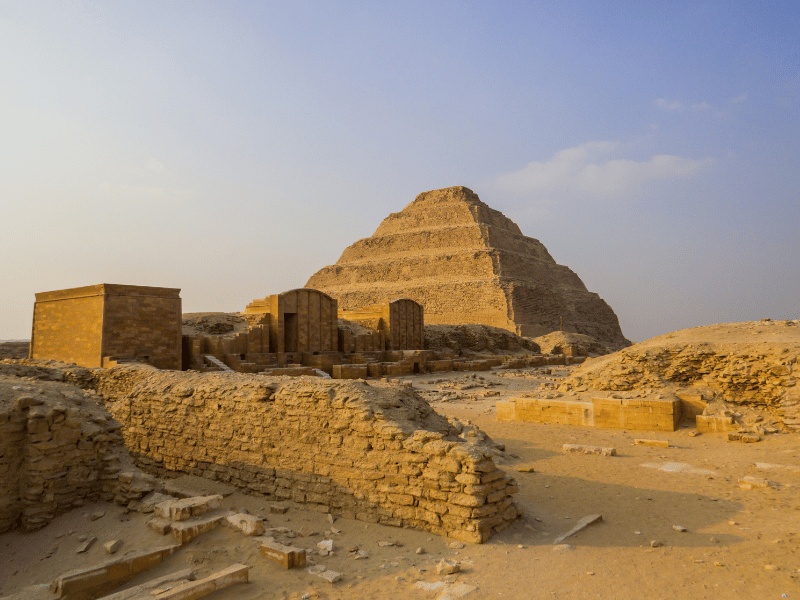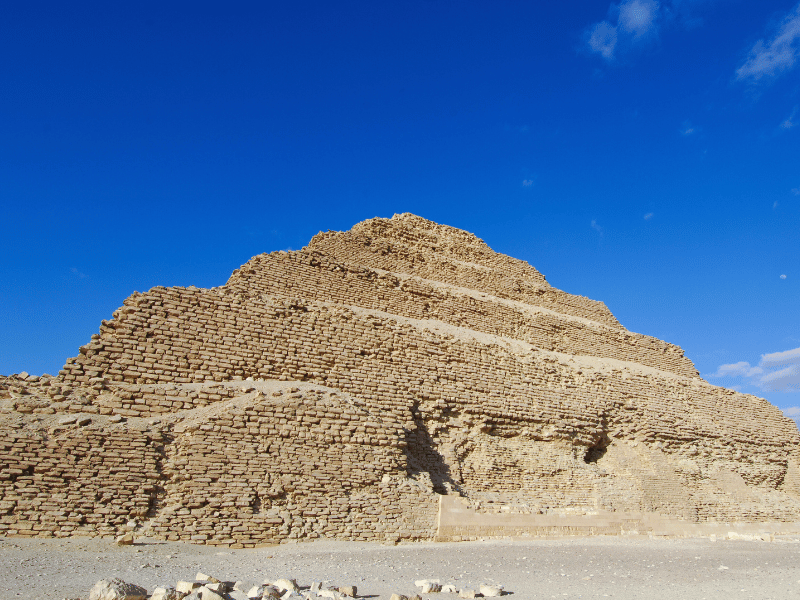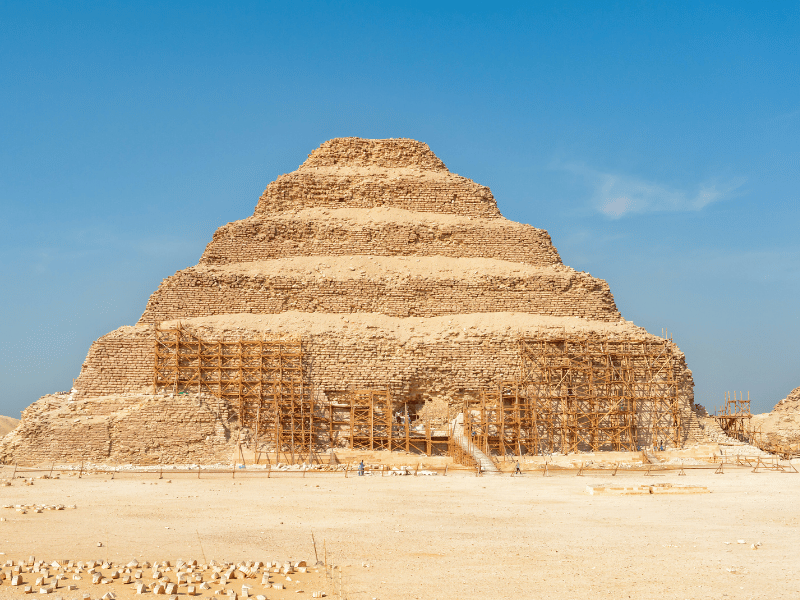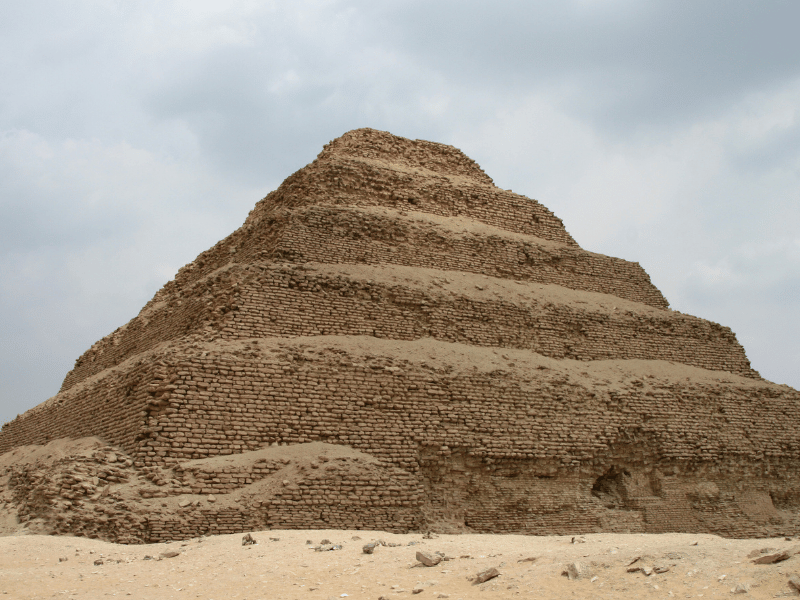Vestiges of Ancient Civilization
Saqqara is an atmospheric site situated around 30 km south of Cairo in the Governorate of Giza. As one of the oldest sites in all of Egypt, Saqqara dates back over 4,500 years and offers a window into daily life during ancient times. With its notable step pyramid of Djoser and numerous tombs, Saqqara acted as the necropolis for the nearby city of Memphis, which served as the capital of Egypt for over 1,000 years during the Old and Middle Kingdoms.
- Place: Saqqara Step Pyramid (Djoser)
- Country: Egypt
- Governorate: Giza Governorate
- Age: Over 4,500 years old
- Population: Over 200,000 (Saqqara city)
- Discovered by: French archaeologist Auguste Mariette in 1850/1851
- Famous for: Being a vast, ancient burial ground that served as the necropolis for the Ancient Egyptian capital, Memphis
- Nearby locations: Giza Pyramids, Memphis
A Necropolis Fit for Pharaohs
While many tourists are drawn to nearby Giza to see the iconic Pyramids and Sphinx, Saqqara remains a preserved vestige of Egypt’s brilliant Old Kingdom. The most striking landmark here is undoubtedly the Step Pyramid complex of Djoser, the first pyramid ever built. Constructed around 2630 BC, the Step Pyramid introduced Egyptian monumental architecture to the world and established architectural innovations still seen at sites like the Giza Pyramids. Dotted around the Step Pyramid are structures linked to rich burials and daily rituals for the afterlife. Most famous are the Imhotep Museum containing the architect Imhotep’s statue and Serapeum, where immense stone coffins of sacred Apis bulls were found.





Tombs of Noblemen and Artifacts
Deeper into the necropolis, numerous limestone tombs belonging to noblemen and senior government officials who served at the royal court in Memphis have been uncovered over centuries of excavations. The underground tombs have elaborately carved and painted inner chambers decorated with hieroglyphs and vivid scenes of daily life. Remarkably well-preserved artifacts discovered inside tombs, such as wooden models of slaves, boats and fixtures, offer a rare glimpse into ancient Egyptian civilization. Mummified animals and a mummified lion are also on display after being discovered amidst the tombs, showing the link between animals and spirituality during Egypt’s pharaonic period.
Ongoing Archaeological Work
While many areas of the 1,000-hectare site have been excavated since the 19th century, new discoveries are still regularly being made by ongoing archaeological missions at Saqqara. Just in 2022, Egyptian and German archaeologists unearthed several shafts and tombs belonging to top officials. One of the most recent important finds was an abbatoir, or ancient slaughterhouse, where butchered animals were prepared as food offerings for the deceased. Such everyday finds provide priceless details about life in Ancient Egypt. Continuous research like this ensures Saqqara, located very close to sprawling Cairo, remains one of the most historically significant archaeological sites in the country.
A Growing Population
Today, over 200,000 people live in the town of Saqqara located only 5 km north from the archaeological site. The surrounding agricultural lands have been replaced by newer districts to accommodate a growing population. However, the original settlement contains landmarks reflecting Islamic heritage as well as Coptic churches. This area flourished as a religious center after Egypt adopted Christianity in the 4th century AD.
New Development Projects
To better regulate urban expansion near the antiquities and attract more cultural tourists, the Saqqara archaeological zone has been expanded and development projects are upgrading local infrastructure. A new tram line and station will directly connect Saqqara to Cairo metro lines from 2025. Other planned projects involve upgrading roads, creating bicycle lanes and developing green spaces around the site for public recreation according to international heritage protection standards. When complete, such eco-friendly improvements aim to boost sustainable tourism revenues that benefit the local community.
Preserving the Past for the Future
While development brings modern livelihoods, authorities and residents alike remain committed to sustaining Saqqara’s important historical legacy. By organizing community clean-ups and awareness campaigns, locals are playing their part to preserve the tranquil ambience within the sprawling site. New signboards educate visitors on restoration efforts too. As Saqqara looks ahead with cautious progress, its ancient treasures will hopefully remain well-preserved for many more generations to learn from this fascinating window into Egypt’s earliest civilisation.
In conclusion, Saqqara contains priceless insights into religious beliefs, architecture and everyday life during Egypt’s peak as a regional power over 4,500 years ago. As excavations continuously reveal more buried treasures, this atmospheric site deserves dedicated exploration alongside tours of nearby monuments at Giza and Memphis. Both history lovers and those searching for cultural edification will find something new to discover within vibrant Saqqara.











